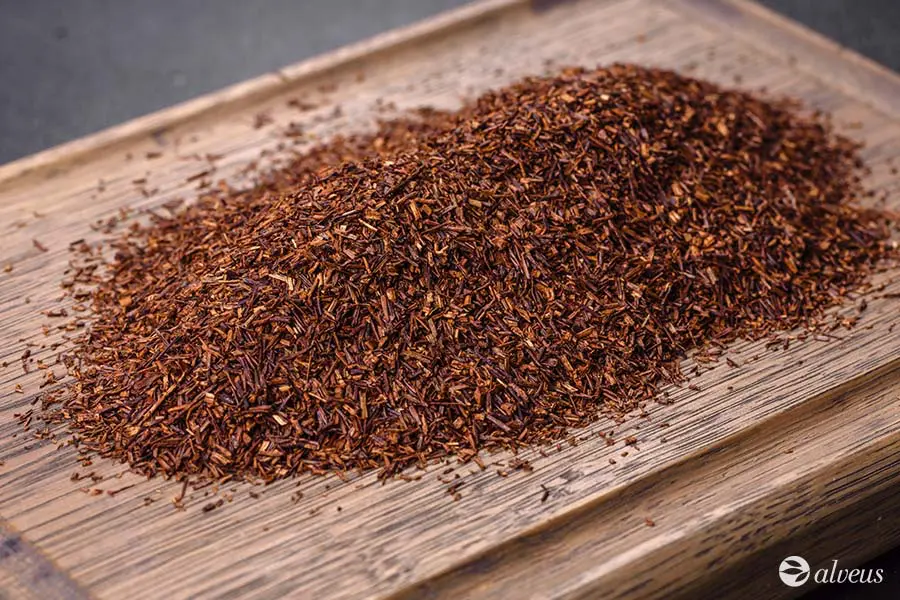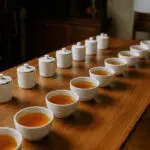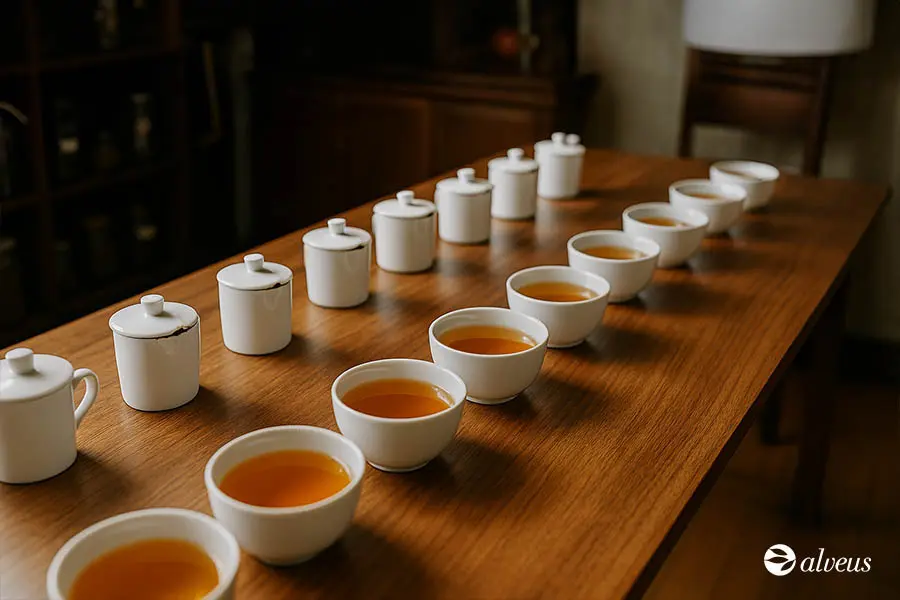Rooibos consumption continues to grow globally, driven by two main factors: its natural sweetness and its caffeine-free nature.
This latter characteristic makes it suitable for a broad audience, from children and seniors to individuals sensitive to caffeine—or those simply seeking a unique flavour, whether hot or iced.
However, its versatility as a base for creating unique blends makes rooibos irresistible for tea shop owners. Its ability to pair seamlessly with various ingredients and aromas enables you to craft personalised mixtures that cater to every taste—spicy, fruity, citrusy, floral, and beyond.
To help you maximise its potential, we’ve prepared this guide with the most important aspects of rooibos. Advise with confidence your customers and provide them with an exceptional shopping experience.
What is Rooibos?

Rooibos (Aspalathus linearis) is a plant native to South Africa, specifically the mountainous region of Cederberg, north of Cape Town.
Often called “rooibos tea” or “red tea,” it is technically not a tea, as it does not come from the Camellia sinensis plant like green, black, or white tea. Instead, rooibos is a herbal infusion made from the leaves and stems of this plant.
The History of Rooibos

Archaeological evidence suggests that rooibos may have been used thousands of years ago, though there is no clear proof it was consumed as an infusion during precolonial times.
Traditionally, the Cederberg region’s inhabitants collected rooibos leaves from the mountains and processed them manually: they pounded the leaves on flat stones using wooden tools to release their components, promoting oxidation. This rudimentary method laid the foundation for modern production techniques.
It wasn’t until the early 20th century that rooibos gained recognition outside its place of origin. European settlers, seeking local alternatives to black tea, began cultivating and commercialising it.
By the 1930s, demand grew exponentially, transforming rooibos from a local infusion to a national symbol and global product. Today, its cultivation remains a vital source of income for the Clanwilliam region, embodying cultural and economic heritage.
Rooibos Production
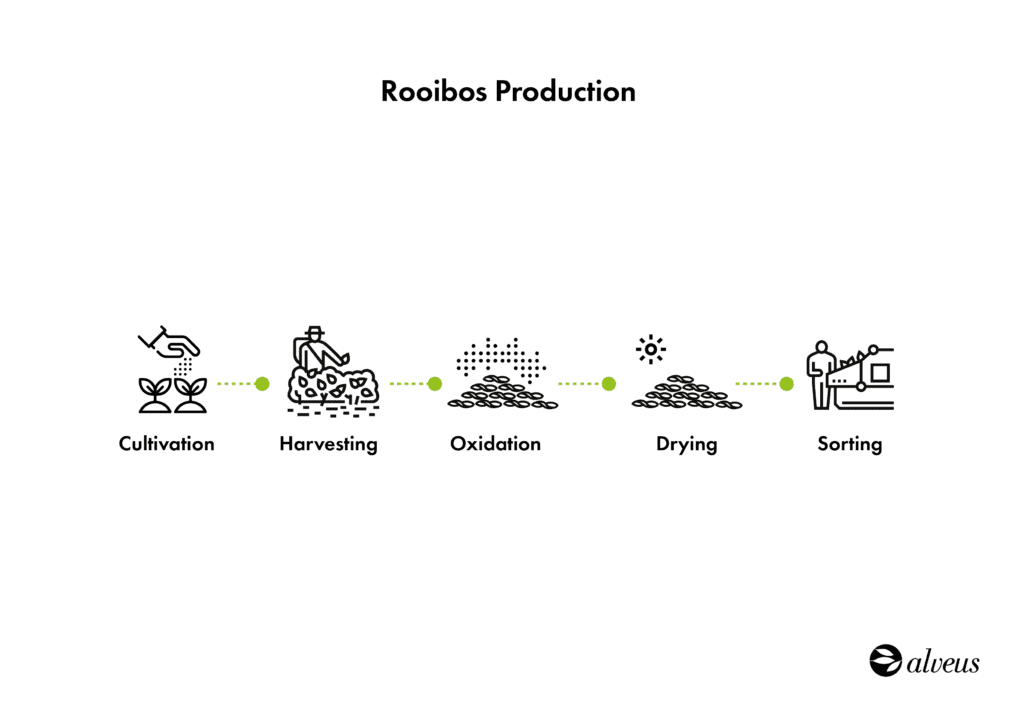
Rooibos production combines sustainable farming practices with traditional techniques.
The unique environment of Cederberg—with its Mediterranean climate, acidic soils, and extreme temperatures—provides the ideal conditions for cultivating Aspalathus linearis.
- Cultivation: Grown mainly in sandy, acidic soils in South Africa’s arid regions, the plant thrives in Cederberg’s rainy winters and hot summers.
- Harvesting: Leaves and stems are hand- or machine-harvested during the summer (January to April in the Southern Hemisphere).
- Oxidation: For red rooibos, the harvested leaves are crushed and left to oxidise, giving them their characteristic reddish hue and sweet, earthy flavour. Green rooibos skips this step, retaining a fresher, more herbal taste.
- Drying: The leaves are sun-dried after oxidation.
- Sorting: Leaves are sorted by quality before being packaged for sale or export.
How to Prepare Rooibos
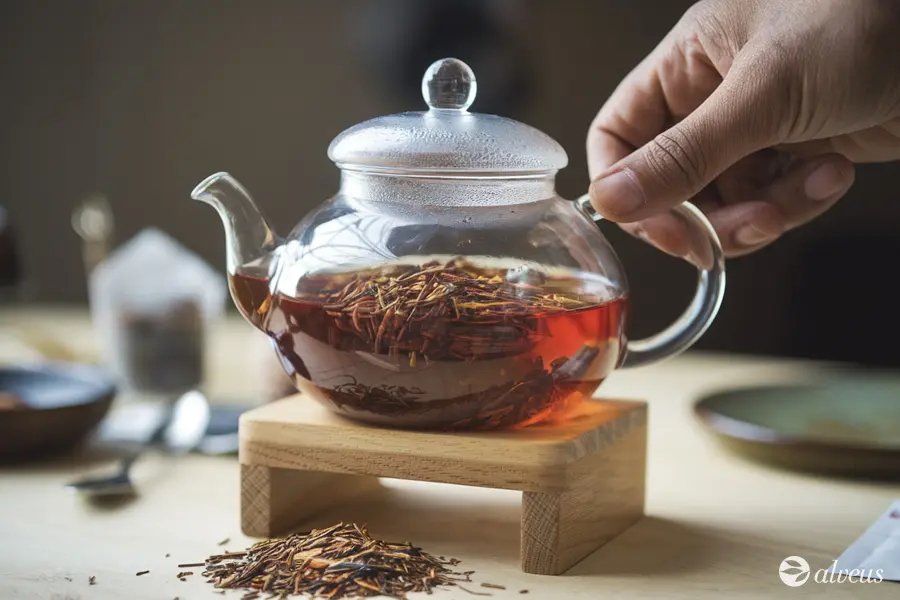
To brew rooibos properly, boil water (100°C/212°F) and add approximately 15–20 grams of rooibos leaves per litre.
Let it steep for 7 to 10 minutes, depending on taste preference.
You can also add a splash of milk, which pairs beautifully with pure oxidised rooibos or spice-infused blends.
Some people prefer to sweeten it with sugar, honey, or sweeteners, although rooibos has a naturally pleasant sweetness.
Rooibos is also excellent served cold; let it cool or add ice after brewing.
Reasons to Incorporate or Expand Your Rooibos Offer
In addition to being a global trend, there are many reasons to sell Rooibos in your tea business. Even if you offer just a few references, expanding this selection can be a great move.
Here are the most important reasons:
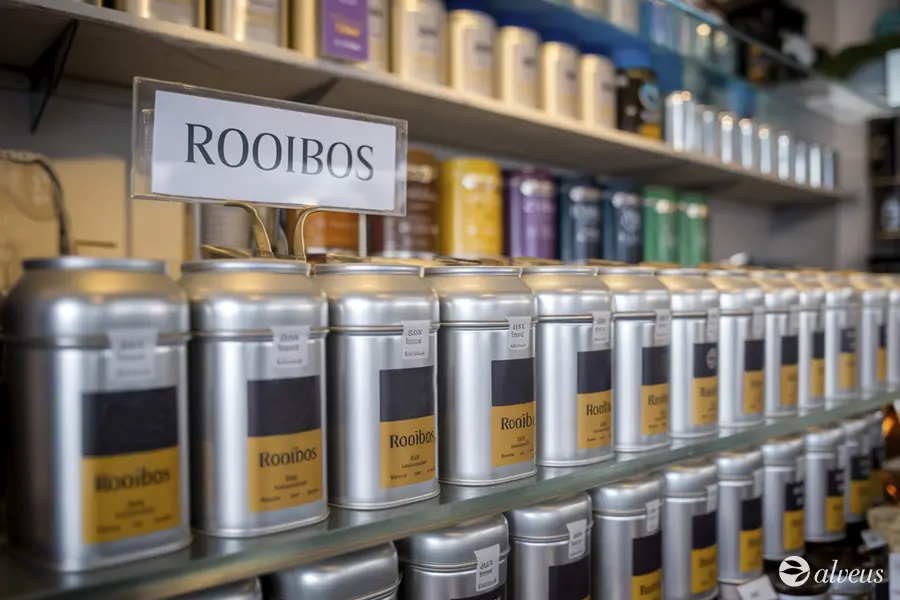
A caffeine-free option for all audiences
As mentioned earlier in this guide, one of the main reasons Rooibos is gaining popularity is that it is completely caffeine-free.
Rooibos is ideal for all ages, from children to adults, and it’s a perfect choice for those who want a relaxing beverage before bedtime or throughout the day without worrying about caffeine.
A beverage known for its health benefits
In South Africa, Rooibos is known for its antioxidant, anti-inflammatory, and digestive properties, making it a popular choice among consumers seeking to improve their overall well-being.
It contains a variety of minerals like calcium, iron, magnesium, and zinc, commonly associated with benefits for bone health and immune system strengthening. Additionally, its tannin content is quite low.
Versatility in blends and combinations
Its characteristics allow it to blend with countless flavours and aromas, making it possible to create the perfect blend for every consumer. Some, like spiced or cocoa blends, are especially delightful with milk.
You'll be part of an expanding market
As more people become interested in natural, caffeine-free products, the Rooibos market continues to grow.
Especially in Europe and North America, the demand for Rooibos has increased significantly in recent years, driven by rising awareness of self-care and wellness.
Types of Rooibos Available in the Market
Rooibos is marketed in different forms: pure and in blends.
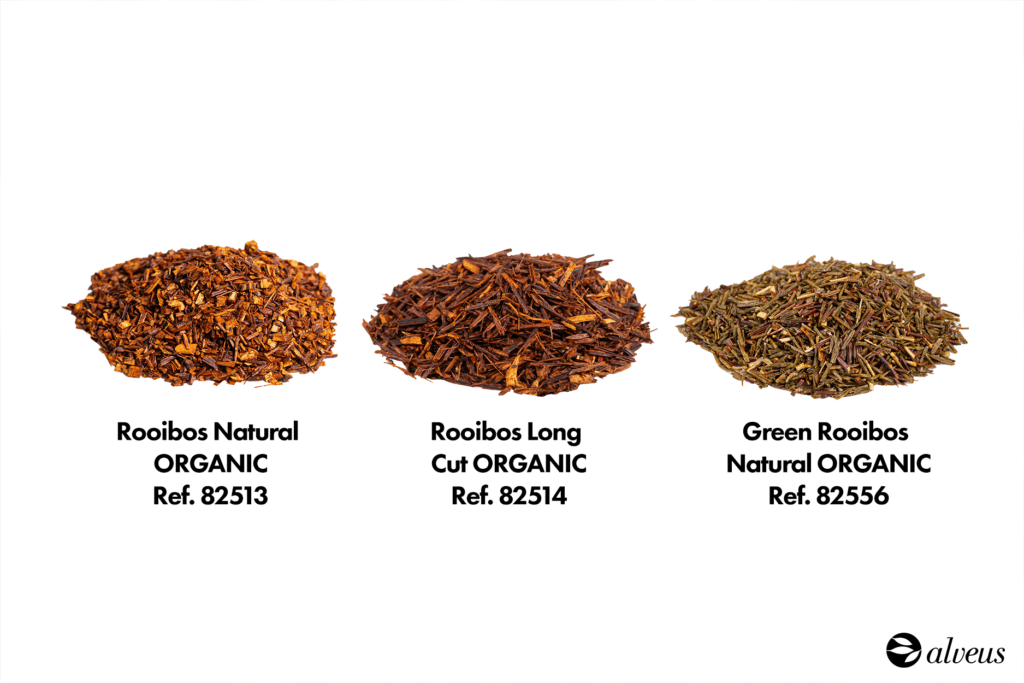
Pure Rooibos comes in regular grade, long cut (leaf), or green Rooibos. The latter has not been oxidised.
As we’ve mentioned several times, there is also the option of consuming Rooibos in blends. Some of the most popular blends include berry fruits or Kalahari. You can find our wide selection of Rooibos blends at this link.
Why We Are the Best Rooibos Supplier for Your Business
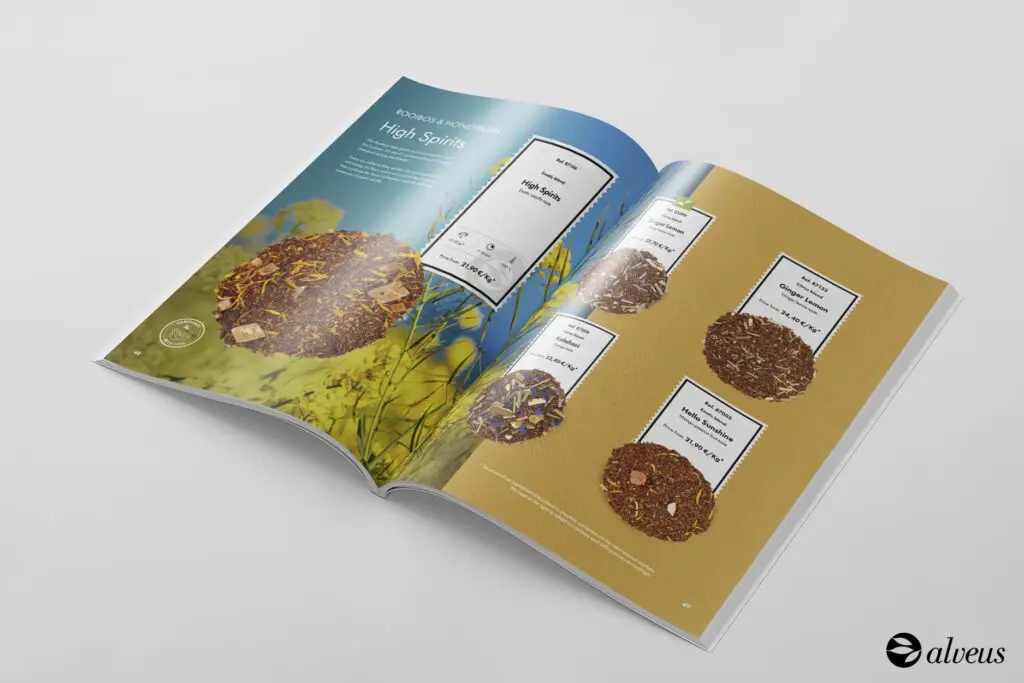
We are proud to have been pioneers in offering a wide variety of Rooibos in our early catalogues.
Today, we are the preferred choice for businesses looking for variety, exceptional quality, diverse products, and services designed to boost their sales.
Unmatched variety: We offer pure Rooibos and a wide range of creative blends tailored to your customers’ preferences.
Organic and conventional: We serve all market segments, offering options that ensure sustainability and affordability.
Experts in customisation: Looking for a unique blend? Our team of specialists can help you create exclusive blends that reflect your brand’s essence.
A selection that sells: Our products are designed to stand out in the market, becoming favourites among tea and infusion lovers.
Are you ready to bring the magic of Rooibos to your customers? Contact our team and discover how we can help you enrich your selection with the best Rooibos.


